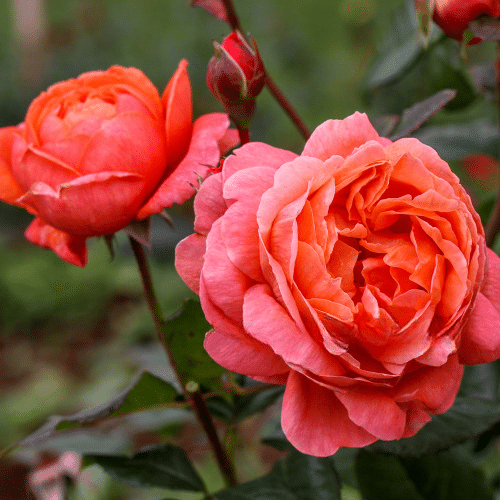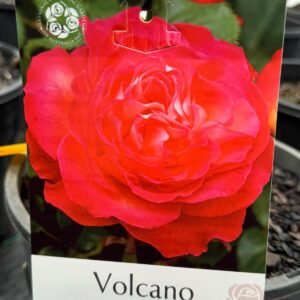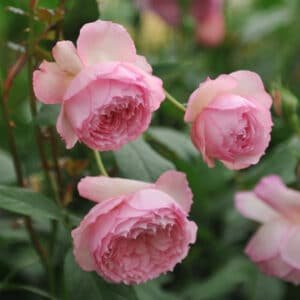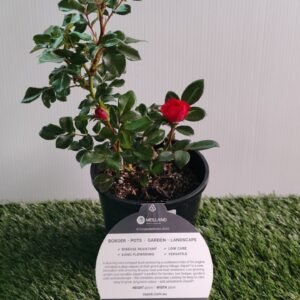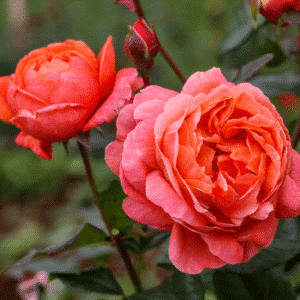‘Summer Song’ is a truly special English rose bred by David Austin. It’s instantly recognisable for its spectacular and unusual colour, a vivid blend of burnt orange, rich apricot, and deep terracotta that is unlike any other rose. The blooms are large, deeply cupped, and full of petals. Its fragrance is equally remarkable—an intense, complex scent of Old Rose with strong notes of chrysanthemum leaves, tea, and banana. The plant has an upright, slightly arching growth habit and is known for its incredible flowering performance.
Usage This rose is a perfect choice for adding a unique and vibrant colour to a garden, particularly in a mixed perennial border where it can contrast with other colours. Its unusual colour and incredible fragrance make it an excellent feature plant. Plant it near a path or a seating area so you can fully appreciate its complex perfume. The blooms are also fantastic as cut flowers, bringing their stunning colour and intoxicating scent indoors for a vase.
Care Tips
- Sunlight: Plant in a spot that receives full sun (at least six hours per day) for the best flowering performance and to maintain its vibrant colour. The colour can fade a little in very intense heat.
- Soil: Prefers rich, fertile, and well-drained soil. Amend the soil with plenty of organic matter, like compost or well-rotted manure, before planting.
- Watering: Water deeply and regularly, especially during the dry summer months. It’s best to water the soil at the base of the plant to keep the foliage dry, which helps to prevent fungal diseases.
- Fertilising: Feed regularly throughout the growing season (spring to autumn) with a fertiliser formulated for roses. A slow-release granular fertiliser in early spring and regular liquid feeds will encourage a strong, continuous bloom.
- Pruning: Prune in late winter or early spring to shape the bush and remove any dead or weak stems. You can also ‘deadhead’ spent flowers during the season to promote repeat blooming.
- Pests & Diseases: This rose is generally healthy, but it’s still wise to monitor for common rose pests and diseases. Good air circulation is a key preventative measure.
- Tolerances: It performs well in hot, dry Australian conditions but will benefit from some protection from the fiercest afternoon sun.

